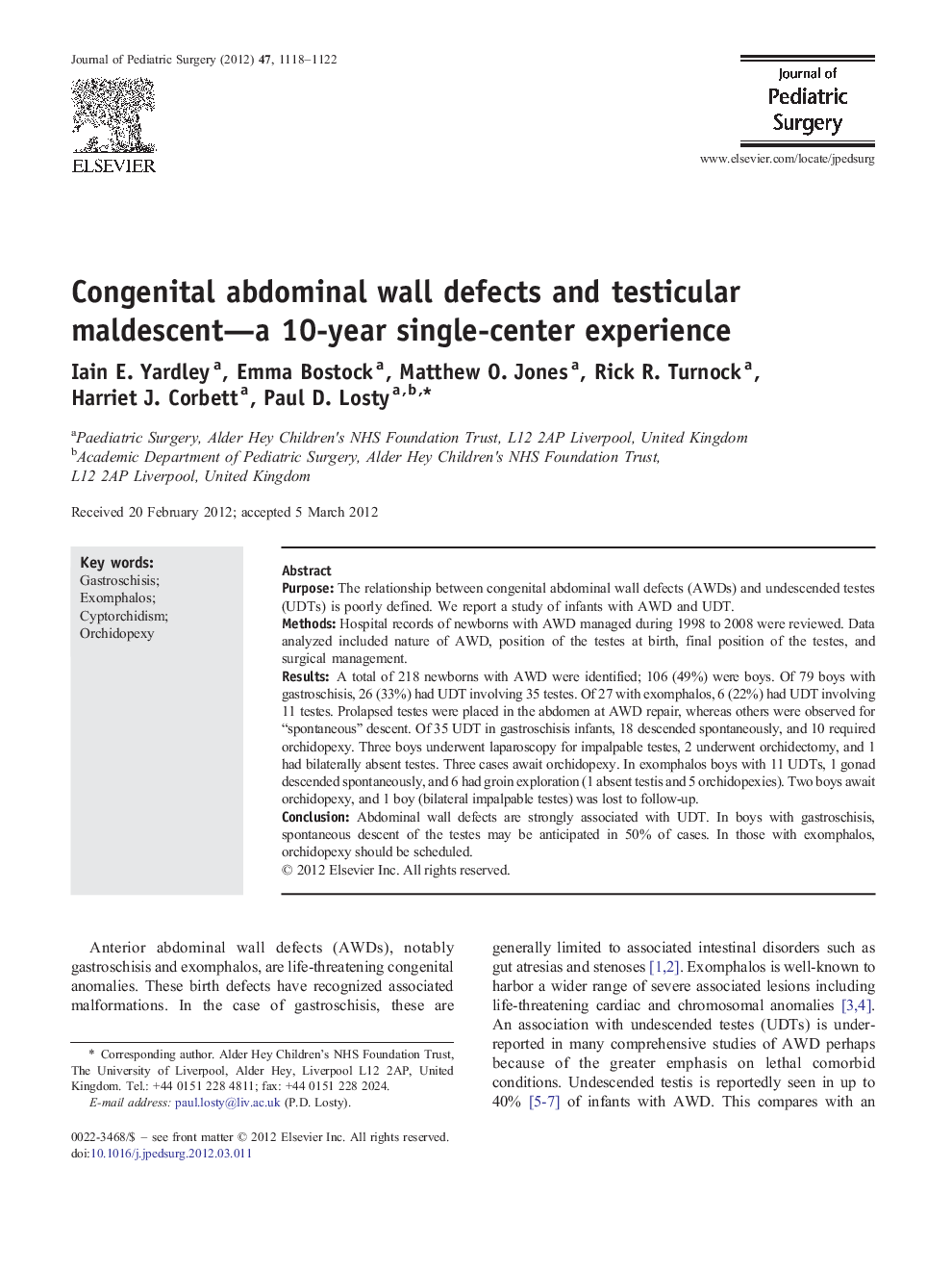| Article ID | Journal | Published Year | Pages | File Type |
|---|---|---|---|---|
| 4157196 | Journal of Pediatric Surgery | 2012 | 5 Pages |
PurposeThe relationship between congenital abdominal wall defects (AWDs) and undescended testes (UDTs) is poorly defined. We report a study of infants with AWD and UDT.MethodsHospital records of newborns with AWD managed during 1998 to 2008 were reviewed. Data analyzed included nature of AWD, position of the testes at birth, final position of the testes, and surgical management.ResultsA total of 218 newborns with AWD were identified; 106 (49%) were boys. Of 79 boys with gastroschisis, 26 (33%) had UDT involving 35 testes. Of 27 with exomphalos, 6 (22%) had UDT involving 11 testes. Prolapsed testes were placed in the abdomen at AWD repair, whereas others were observed for “spontaneous” descent. Of 35 UDT in gastroschisis infants, 18 descended spontaneously, and 10 required orchidopexy. Three boys underwent laparoscopy for impalpable testes, 2 underwent orchidectomy, and 1 had bilaterally absent testes. Three cases await orchidopexy. In exomphalos boys with 11 UDTs, 1 gonad descended spontaneously, and 6 had groin exploration (1 absent testis and 5 orchidopexies). Two boys await orchidopexy, and 1 boy (bilateral impalpable testes) was lost to follow-up.ConclusionAbdominal wall defects are strongly associated with UDT. In boys with gastroschisis, spontaneous descent of the testes may be anticipated in 50% of cases. In those with exomphalos, orchidopexy should be scheduled.
